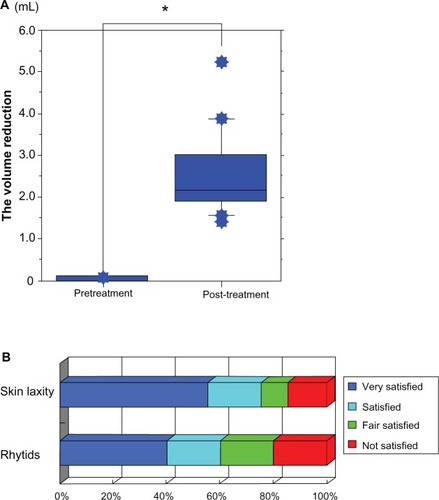Figures & data
Figure 1 (A) Absorption coefficients of melanin (black), hemoglobin (red), and water (blue). (B) The NIR device used in the present study emits a spectrum of near-infrared from 1,000 nm to 1,800 nm (bold red), with filtering of wavelengths between 1,400 nm and 1,500 nm (blue belt), which are strongly absorbed by water and hemoglobin. Cited and revised from in Tanaka et al. Non-thermal cytocidal effect of NIR irradiation on cultured cancer cells using specialized device. Cancer Sci. 2010;101:1396–1402.Citation20
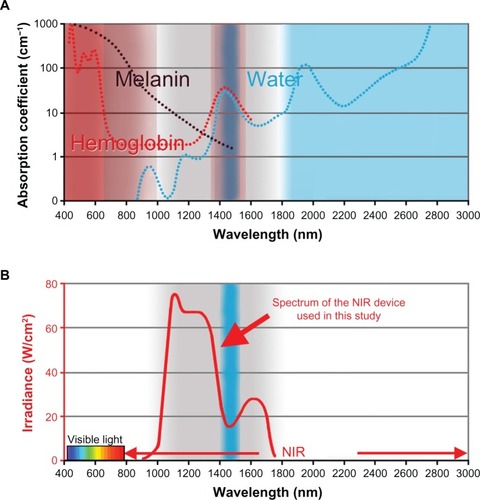
Figure 2 Schematic of our NIR treatment for skin tightening. (A) NIR treatment targeting superficial muscles with the freezer-stored gel (approximately −10°C to 10°C). (B) NIR, treatment targeting dermis with the gel (approximately 10°C–30°C).

Figure 3 A 36-year-old Japanese woman (A and C) pretreatment and (B and D) 60 days post-treatment, and (E and F) three-dimensional color schematic representation. The varying degrees of tightening achieved are shown in colors yellow to red. Green areas indicate areas that remained unchanged. Two treatments with a one-month interval between treatments were performed on the cheeks with four passes at 42 J/cm2 (100 shots). Significant improvements were noted in the gray image and three-dimensional color schematic representation. Volume reduction was 3.140 mL.
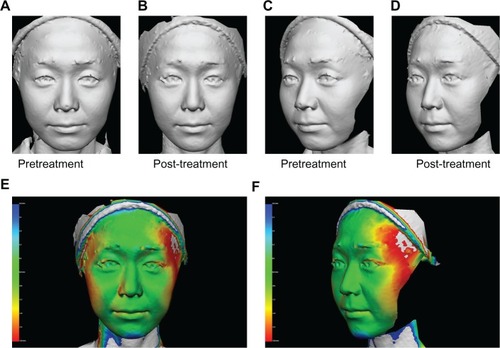
Figure 4 A 49-year-old Japanese woman (A and C) pretreatment and (B and D) 60 days post-treatment, and (E and F) three-dimensional color schematic representation. Only one treatment was performed with four passes at 42 J/cm2 (80 shots). Significant improvements were noted in the gray image and three-dimensional color schematic representation. Volume reduction was 5.248 mL.
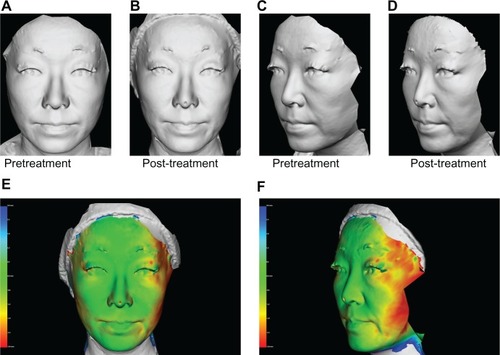
Figure 5 A 65-year-old Japanese woman (A and C) pretreatment and (B and D) 60 days post-treatment, and (E and F) three-dimensional color schematic representation. Two treatments with a one-month interval between treatments were performed with four passes at 50 J/cm2 (100 shots). Significant improvements were noted in the gray image and three-dimensional color schematic representation. Volume reduction was 2.097 mL.
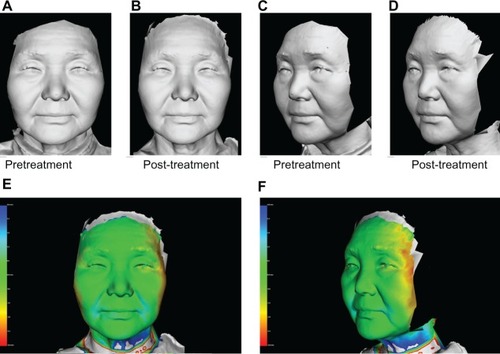
Figure 6 (A) Mean volume reduction measured by comparison of volume at the first pretreatment visit and the last post-treatment visit. The post-treatment volume was significantly reduced compared with the pretreatment volume in all patients (P < 0.0001). Data are presented as the mean ± standard deviation. *Indicates a significant difference. (B) Subjective volunteer assessments were performed using questionnaires. The patients were asked to rate their degree of satisfaction regarding improvement in skin laxity and rhytids. Subjective volunteer assessments are shown as follows: very satisfied (blue), satisfied (light blue), fairly satisfied (green), and not satisfied (red).
